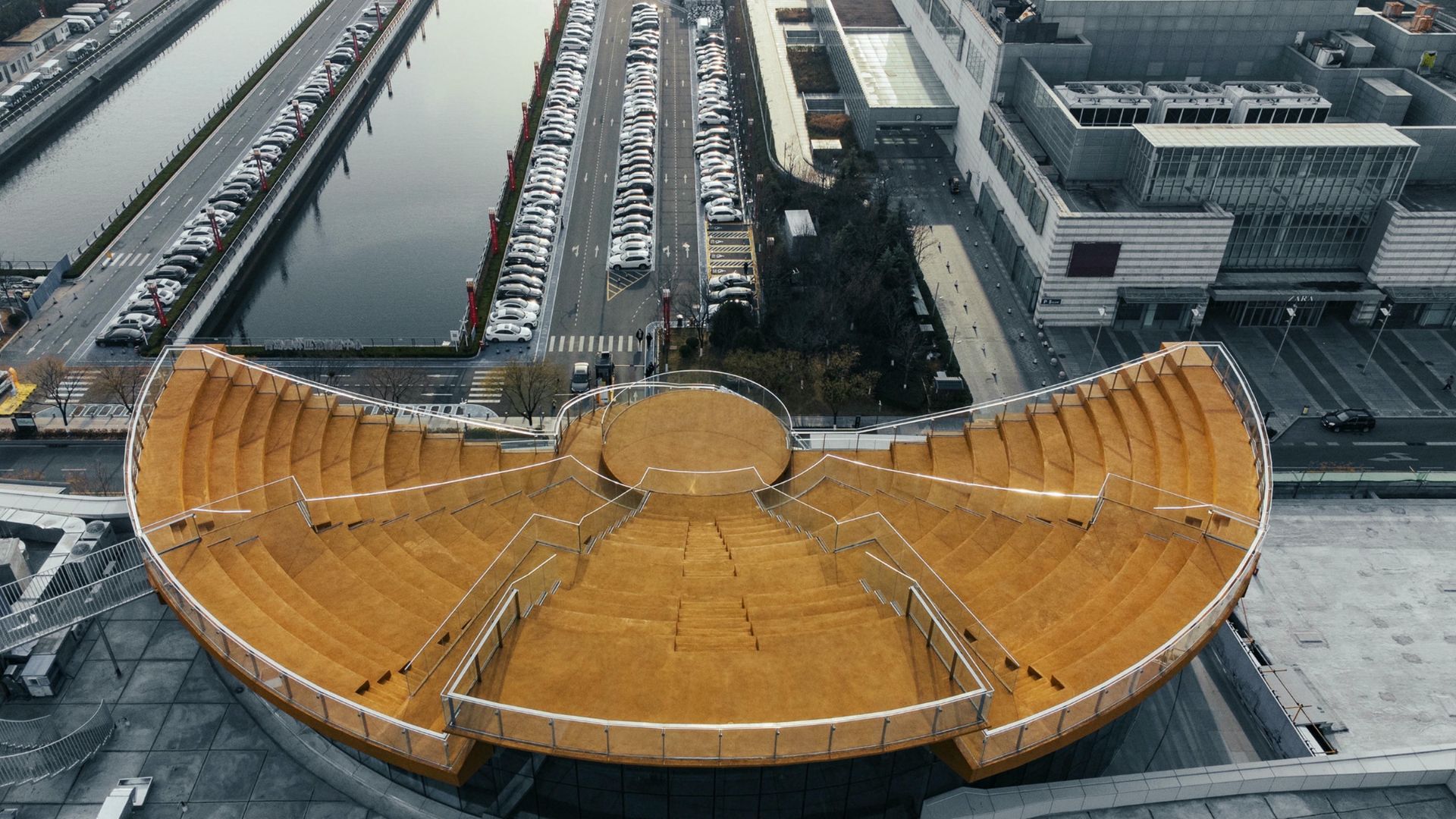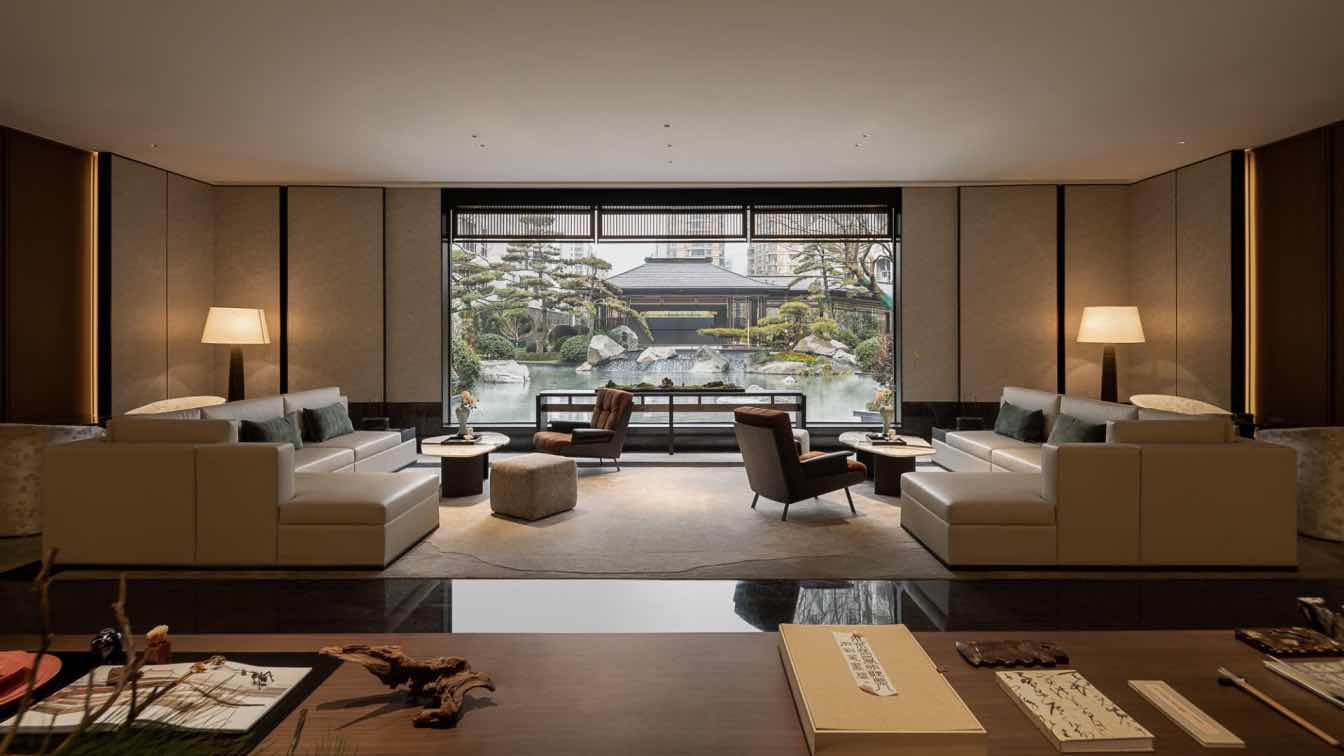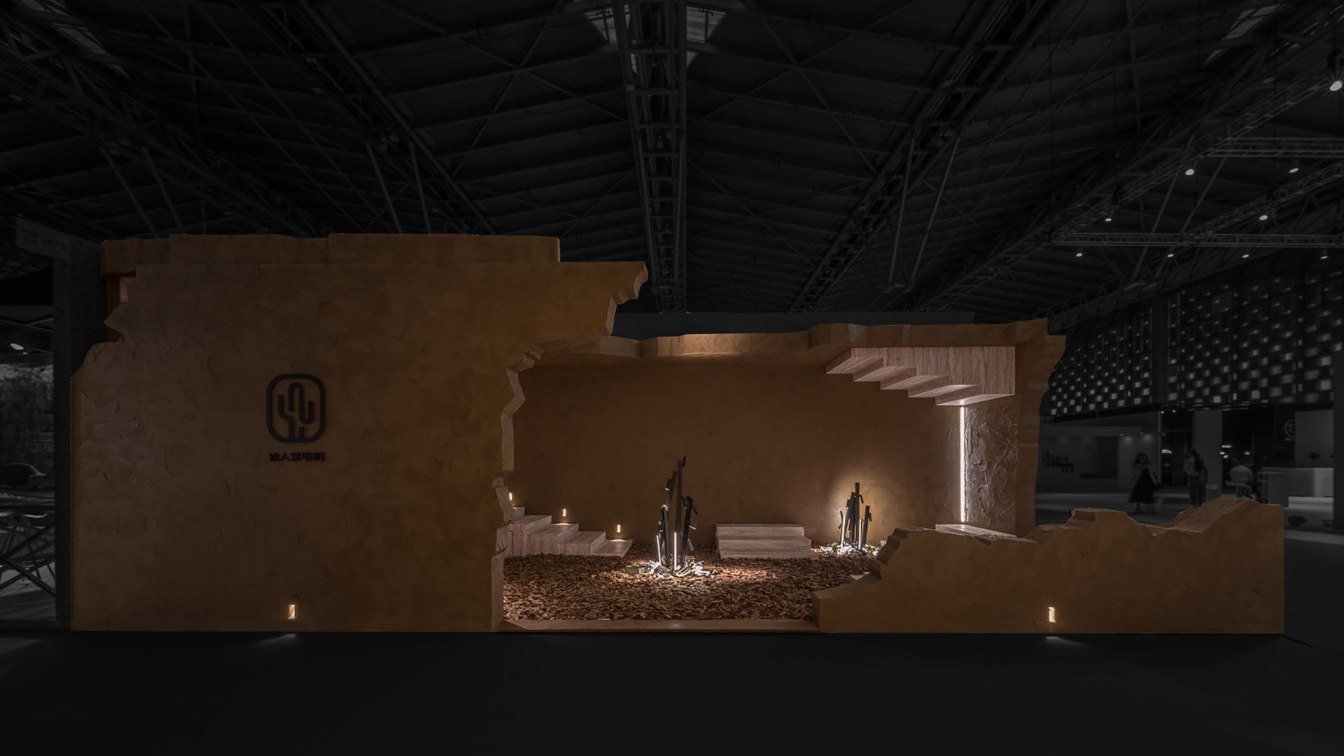Society Particular (SOPA): The SKYBOWL project at Hisense Plaza in Qingdao's Fushan Bayfront reimagines the mall's rooftop into a vibrant, accessible public space. Traditionally closed off and focused inward, the mall's design previously limited engagement with the city's beautiful bay views and temperate climate. Challenging conventional commercial renovation goals, the project rejects the initial brief for an exclusive, glass-encased VIP rooftop area. Instead, it proposes an innovative amphitheatre that serves both as a communal hall and a public observatory, inviting everyone to enjoy panoramic views and cultural performances free of charge.
This transformative approach aims to break down barriers between commercial spaces and the public realm, fostering a sense of community, equality, and openness. By integrating the amphitheatre into the urban fabric, the project not only enhances the mall's relationship with its surroundings but also enriches the social and cultural life of Qingdao. The SKYBOWL project stands as a testament to the potential of architecture to contribute to urban vitality and social cohesion, offering a model for future developments that prioritize public value over commercial interests.
Design Statement
Despite its prime location, Hisense Mall is detached from the urban context with its impermeable architectural form. Our solution is a pragmatic approach to design, where true innovation lies not in shaping but in programming and organizing. We hope this extension project will demonstrate how commercial buildings can embrace cultural awareness and spirituality. The combination of positioning, context, form, and compatible functions makes it an ideal setting for innovative layering of programs. The synergy is unique and apt, promoting a more equitable and inclusive urban environment. SKYBOWL, a rooftop amphitheater on the Hisense Mall, emerges as a pioneering example of urban renewal and a testament to our commitment to reshaping commercial architecture. The project's background reveals the challenge of creating an inclusive space within a high-end mall while adhering to an initial design brief of a "glassed VIP lounge." Our mission was clear: to make stunning views accessible to all classes, transcending mere architectural restyling.

We achieved this by proposing an "amphitheater on top of a hall," a concept that prioritizes inclusivity, cultural enrichment, and sustainability. The project's form, with its lightweight and transparent design, avoids excessive intrusion into the existing architecture and urban environment. Its dual nature—both an independent structure and an integrating interface with the surrounding landscape—demonstrates our intention to balance form and function.
SKYBOWL's design philosophy emphasizes that true innovation goes beyond shaping; it's rooted in programming and organization. We leveraged differences in altitudes to usher in natural light, transforming the previously dark and unpleasant hall into a welcoming and radiant space. This innovative approach reflects our belief in creating a more equitable and inclusive urban environment, promoting quality, equality, and cultural vitality. The uniqueness of SKYBOWL lies in its ability to redefine the relationship between department stores and brands. It offers a clear cultural concept that fosters identity and cohesion in an otherwise chaotic mix of brands. SKYBOWL is an emblem of time, bearing witness to the city's history and transformation, while also providing a catalyst for socialization and activities.
By awarding SKYBOWL, the jury recognizes a project that addresses a crucial issue in contemporary architecture: the need to create inclusive spaces within commercial buildings. It solves the problem of disconnect between high-end retail spaces and urban context by providing a cost-effective, efficient, and inclusive solution. The benefits for the user are evident in the accessible, well-lit space, offering a warm and welcoming environment.

SKYBOWL is unique compared to similar projects due to its focus on inclusivity, cultural awareness, and sustainability, as well as its innovative reorganization of space and function. It offers a distinct identity for Hisense Mall and a clear cultural framework for brands to participate in, setting it apart from typical department store renovations. The jury should award SKYBOWL for its pioneering vision, successful execution, and lasting impact on urban architecture
IDEA
Our primary objective was to create an inclusive space where people from all walks of life could appreciate the stunning views. Therefore, we had to devise a solution that was both time and cost-efficient, yet compelling enough to sway our client's original request. Rather than creating a new shape, we sought to imbue the shape with new meaning. Hence, the proposal of "an amphitheater on top of a hall" - a light-flooded hall that meets the brief's requirements, topped with a public space where people can climb high, bask in the picturesque scenery, and enjoy public performances without spending a penny.
FORM
For the roof, an amphitheater is a natural and honest choice that ages well over time. To address the challenge of dark and uninviting spaces beneath the seats, we strategically harnessed changes in elevation to usher in natural light, transforming the hall into a welcoming and radiant space. The design features a spatial steel structure system that minimizes the number and thickness of columns, with a hyperbolic paraboloid shell that enhances structural efficiency. The Z-shaped beams, formed by the steel plate treads and kick plates of the grand staircase roof, directly participate in load-bearing, thus reducing the need for secondary beams.

FUNCTION
The Urban Artifact excels in its versatility, providing a public gathering space, a cultural stage, and a free platform for performances. Its minimal columns and efficient structure offer unobstructed bay views, fostering an inclusive atmosphere. VIP guests of the mall can rest in the light-filled hall underneath the amphitheater whereas the public can access the rooftop directly without interrupting. Both spaces are flexible in its functions: the rooftop has also been rented out to host fashion shows and private concerts. The glass hall has also hosted public art exhibitions.
DIFFERENTIATION
Most commercial renovation projects prioritize the "consumable" features, often ending up nothing more than an architectural restyling. SKYBOWL challenges inherent spatial patterns by increasing connection and amplifying publicness in an urban dimension. It is both an independent volume and a merging interface with the surrounding landscape. It gave the mall an identity while promoting quality and equality in urban conditions - two interests that's often elusive and not easily achieved simultaneously. It showcases how innovative design can create a more equitable, inclusive urban environment yet being commercially successful.
IMPACT
The roof covering, crafted from recycled EPDM particles, not only promotes sustainability but also requires less maintenance, reducing long-term environmental impact. Drawing from shipbuilding techniques, The project's minimal columns, coupled with the hyperbolic paraboloid shell, minimize materials and costs while promoting environmental responsibility. Over the past few decades, department stores have become landlords to a chaotic mix of undistinguished brands that cancel each other out by claiming their own uniqueness. The Urban Artifact gave Hisense mall the ability to define their own identity, and allowed brands to participate in a clear cultural concept.
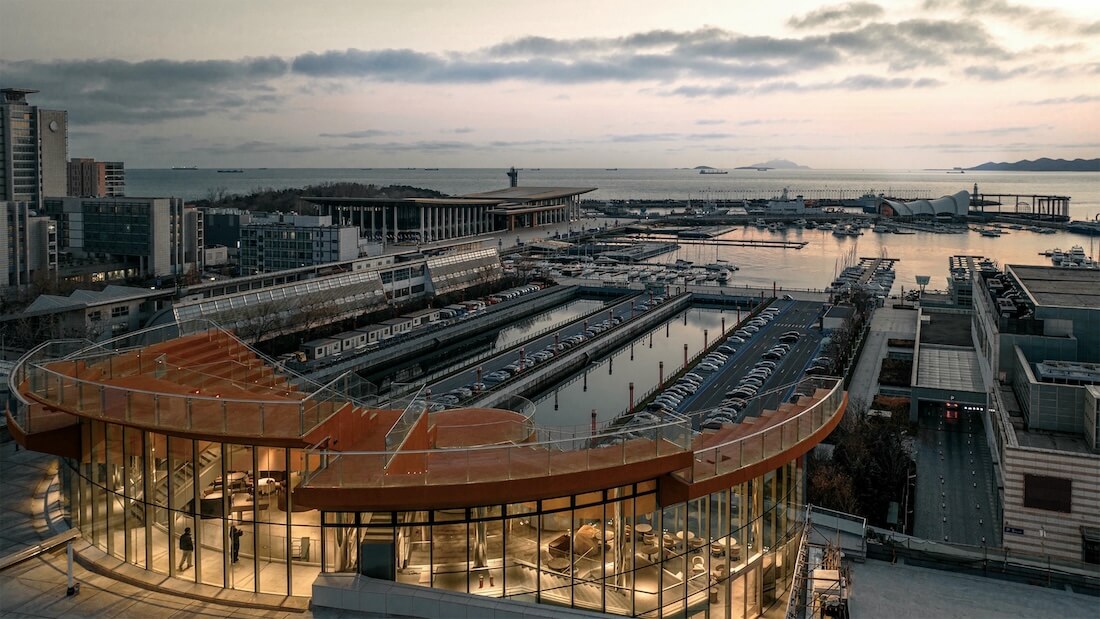
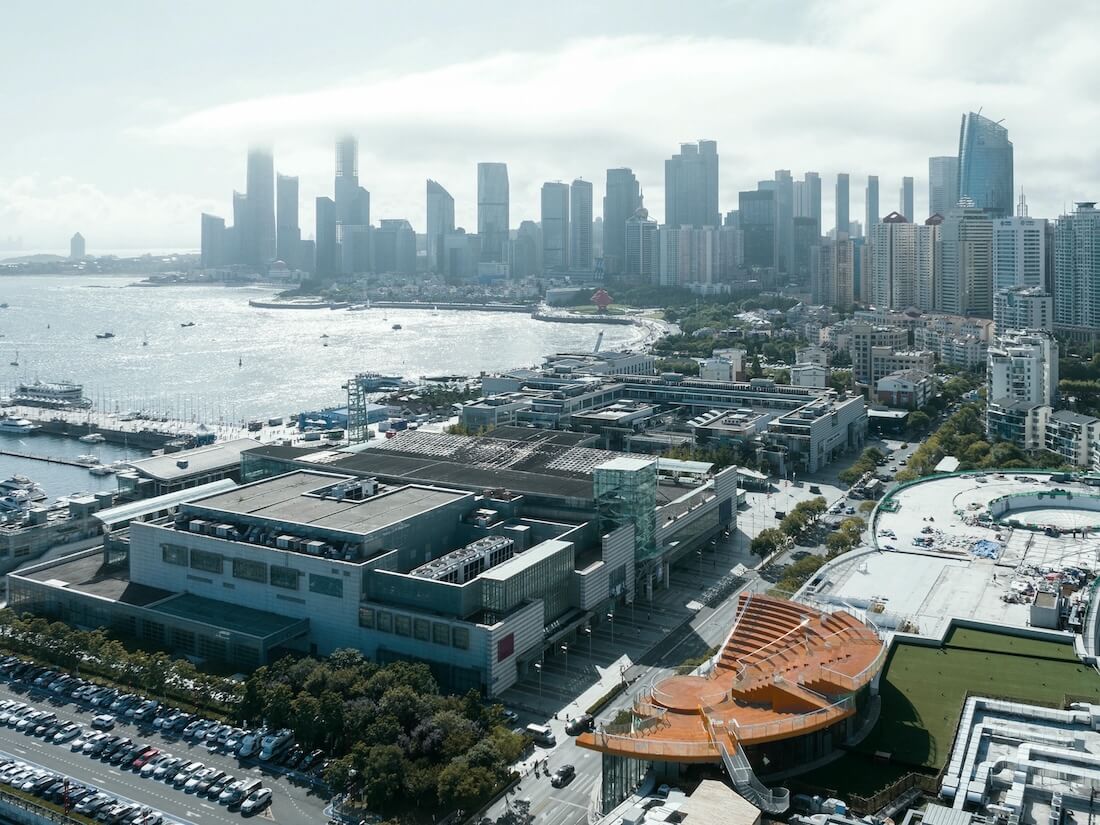
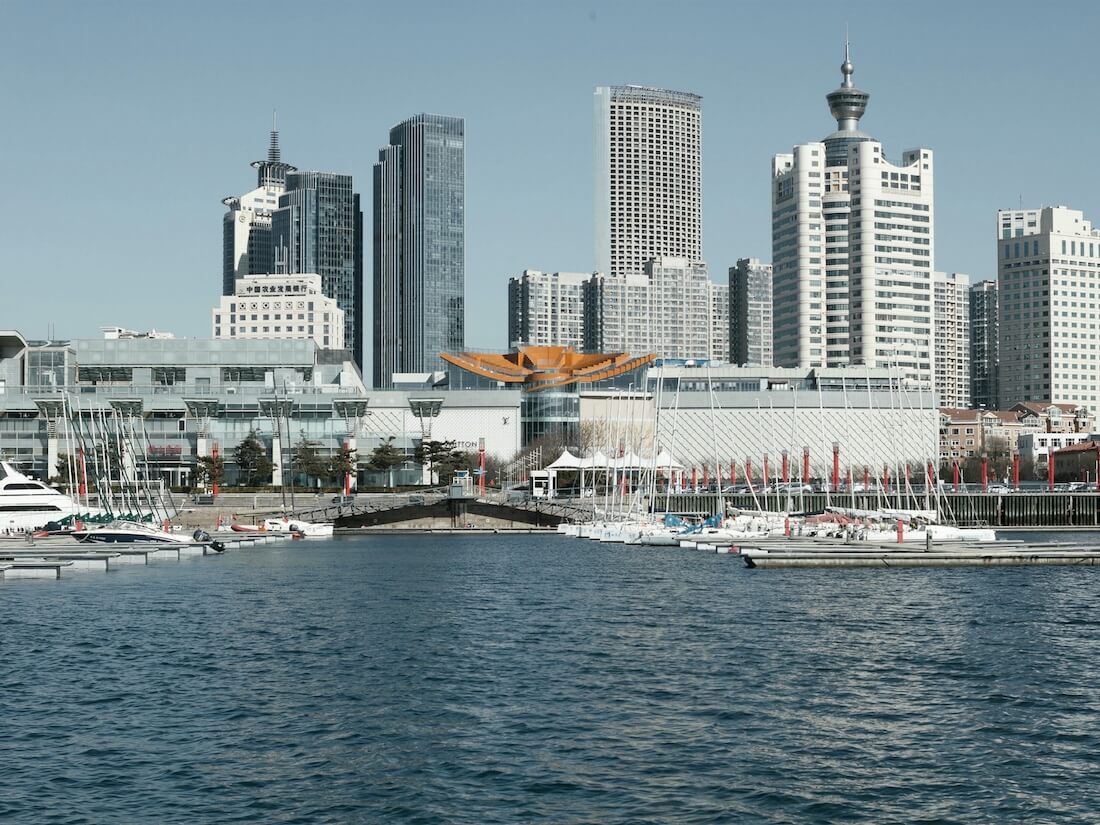
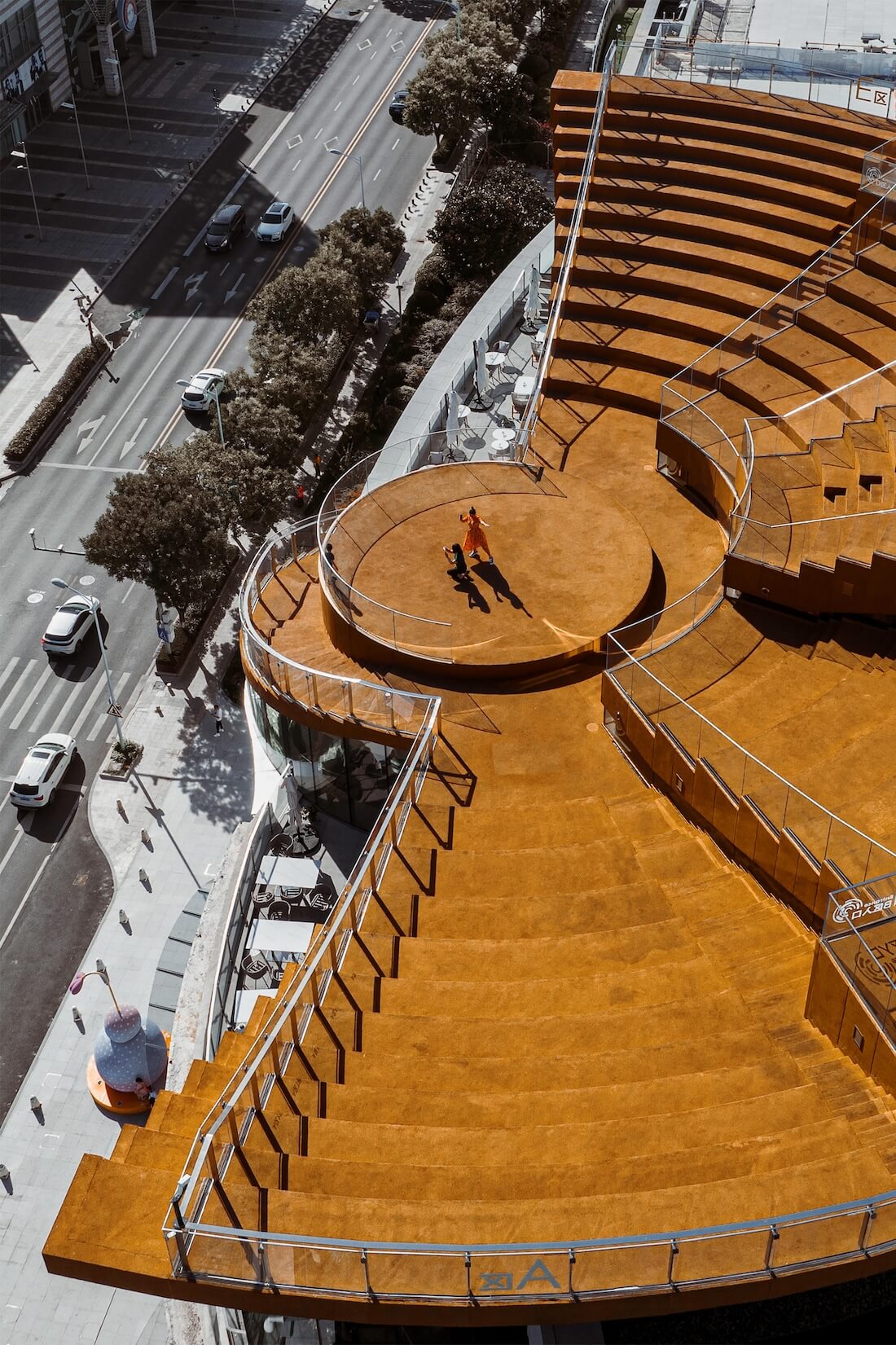
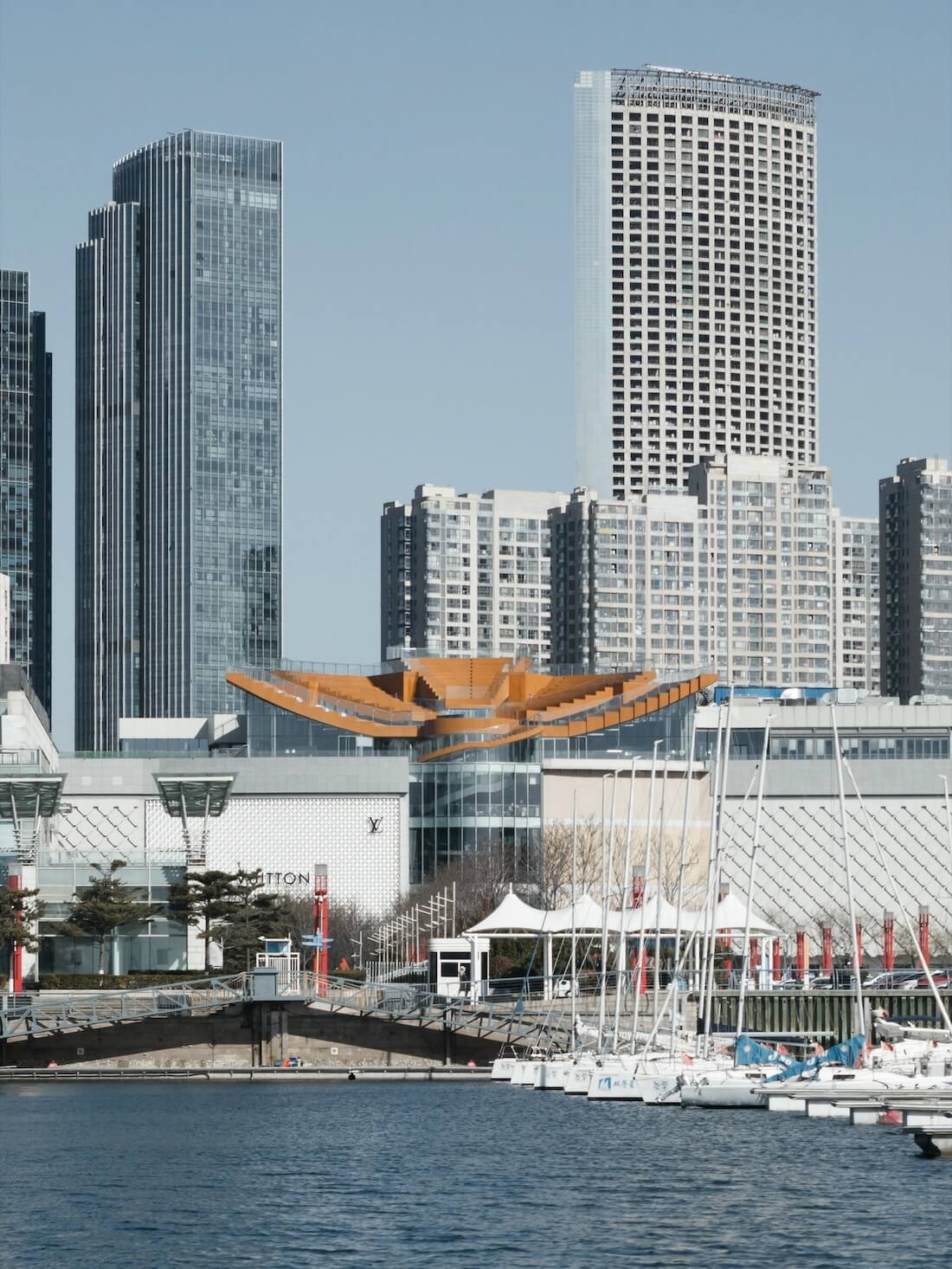
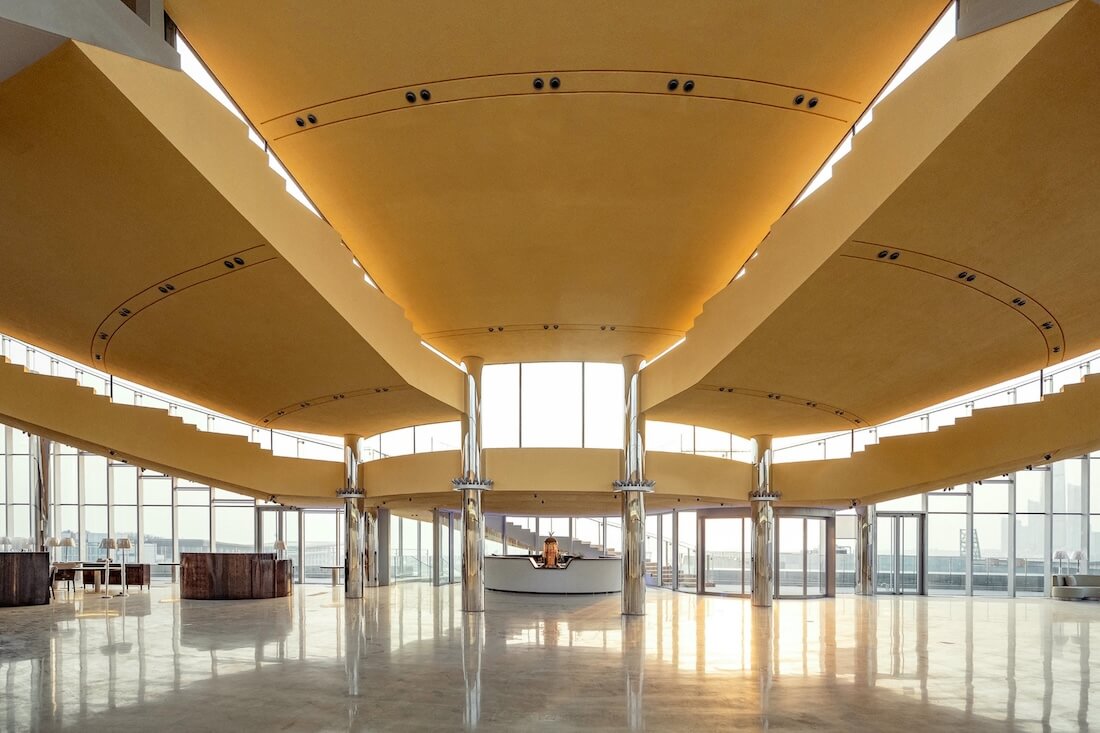

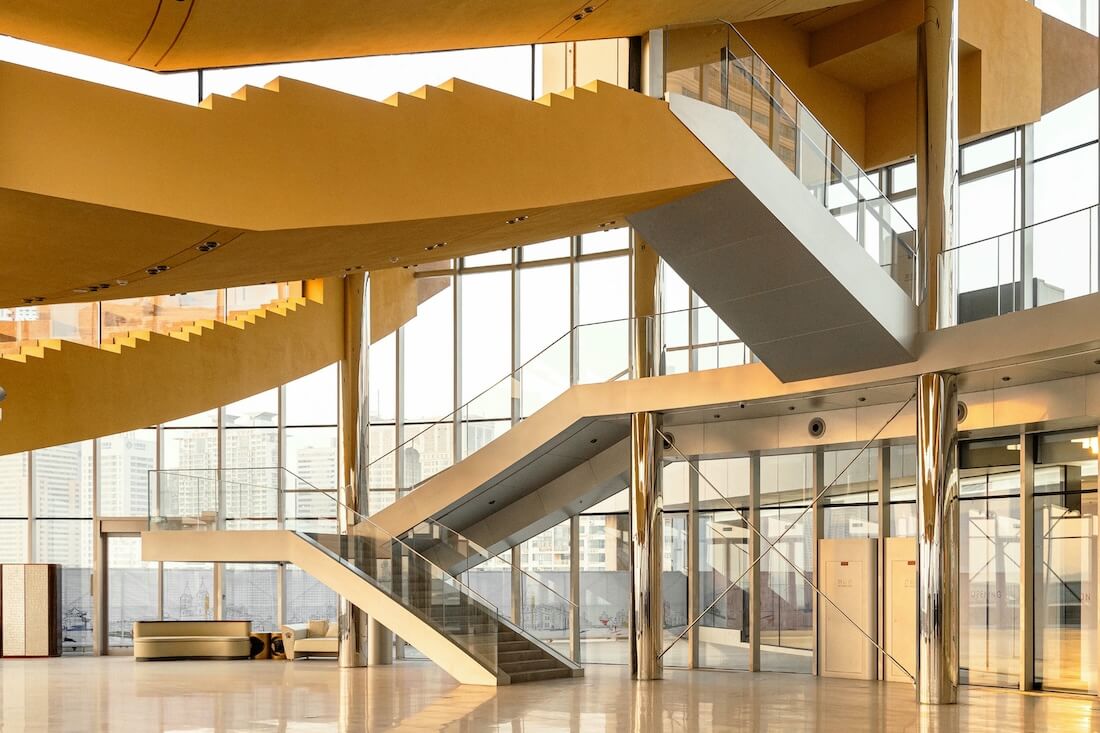
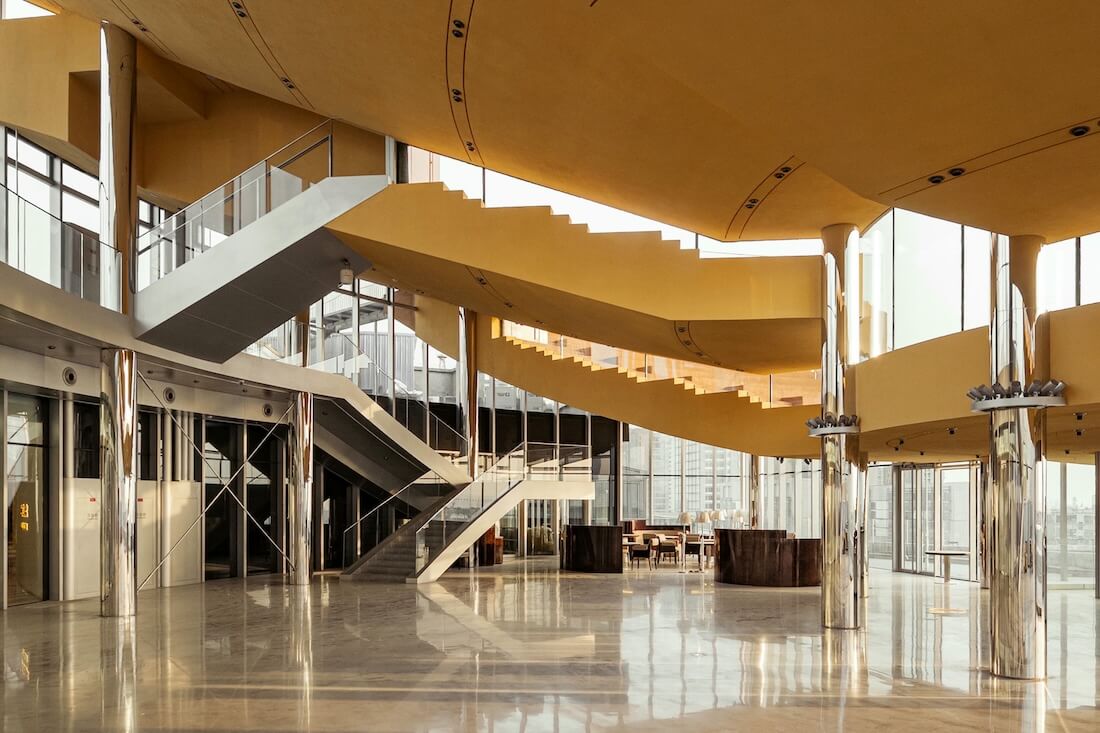
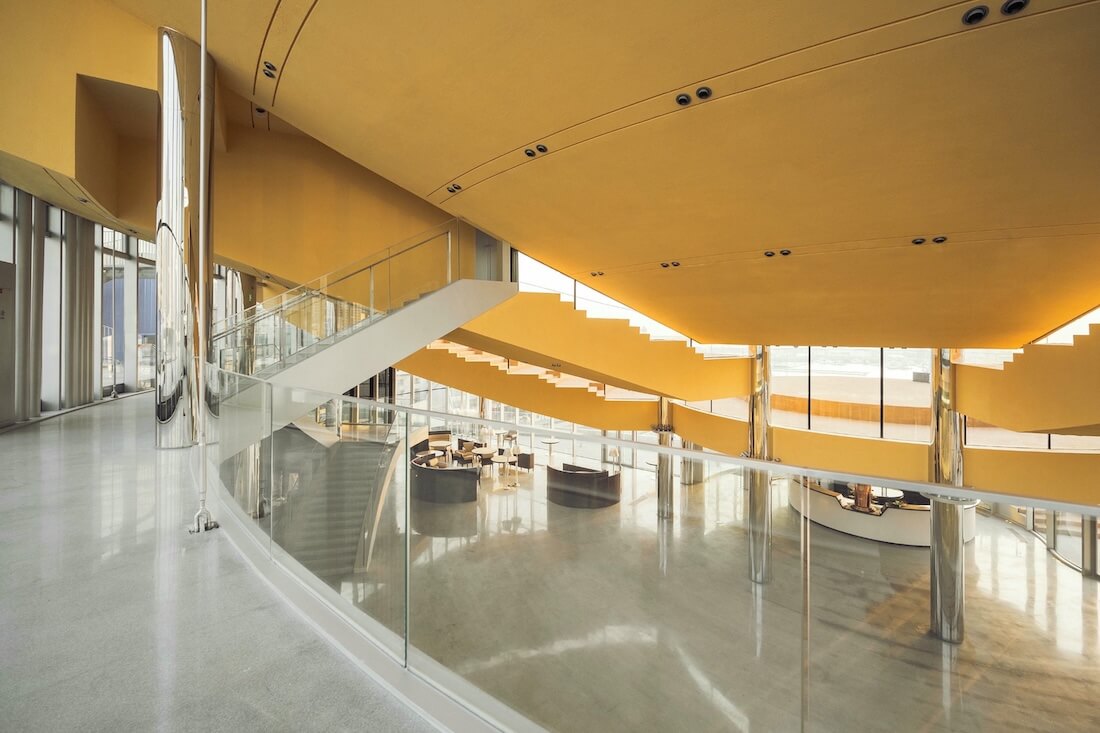
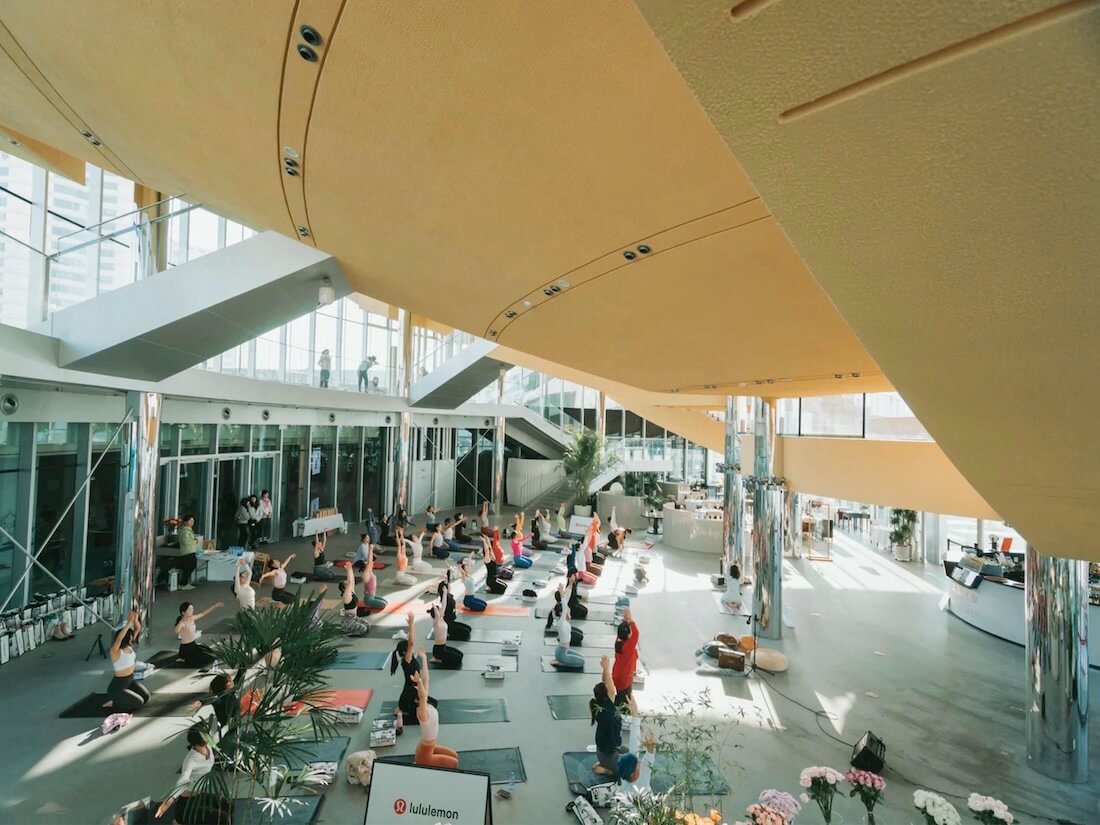
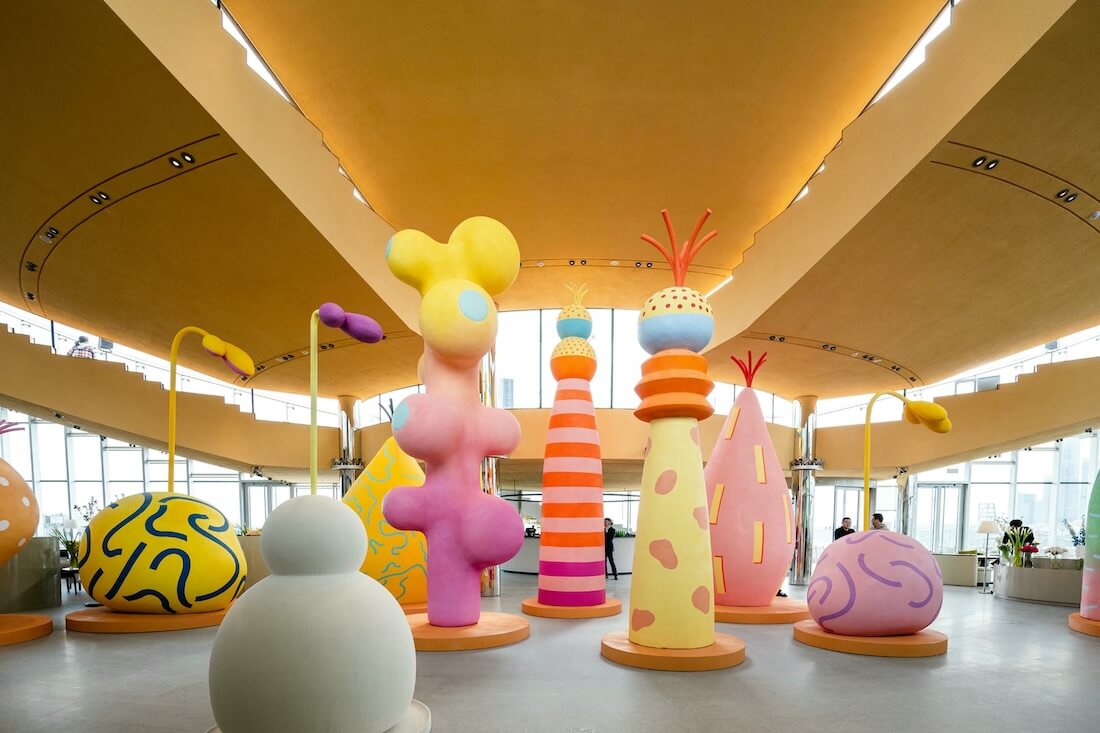
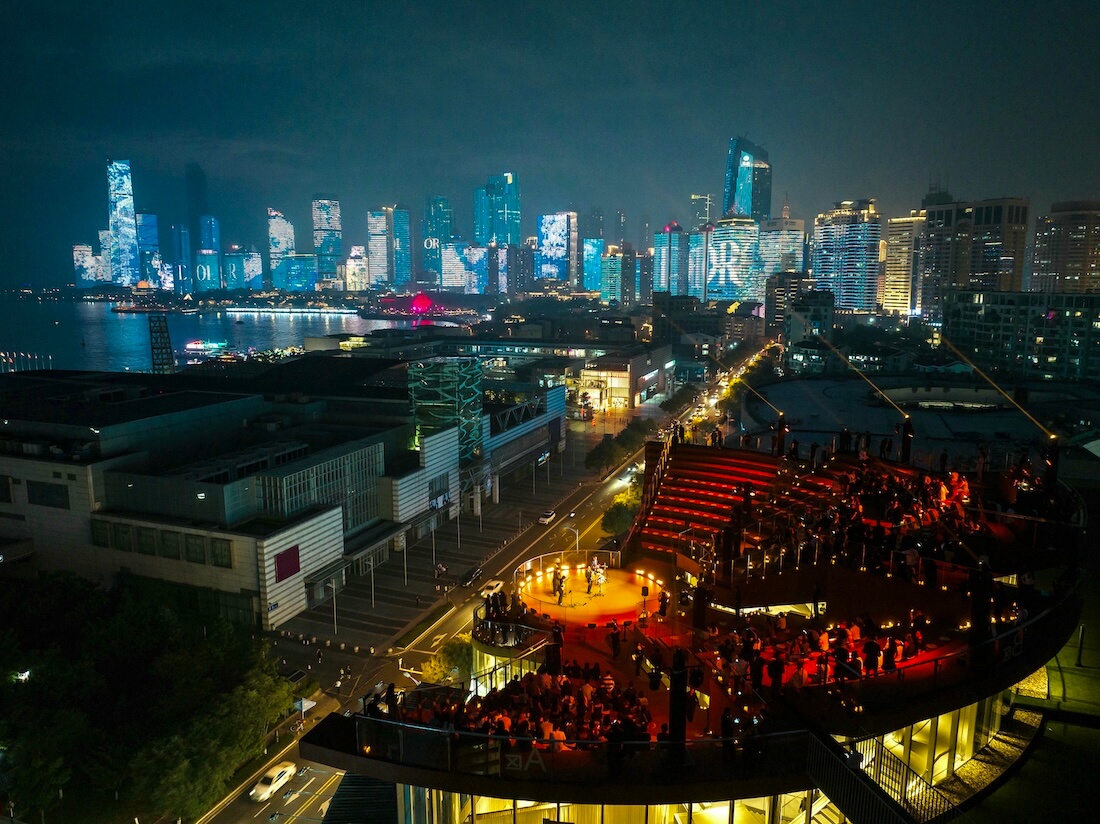
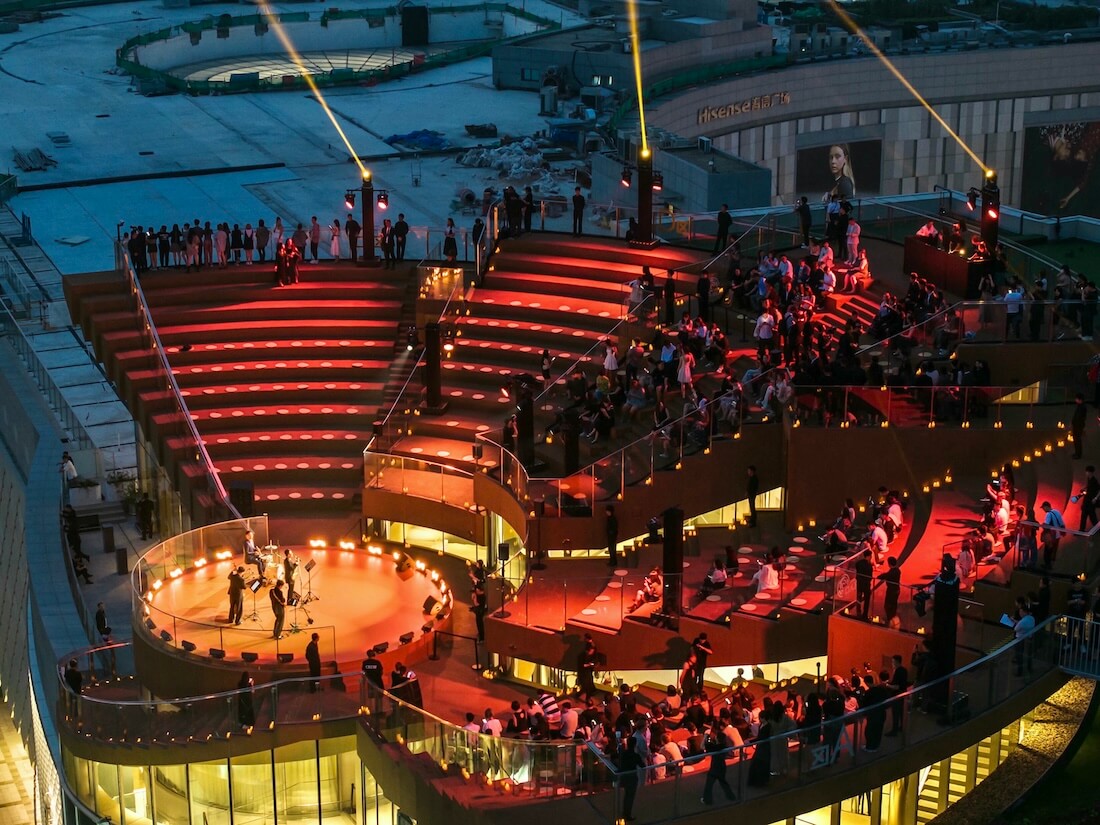

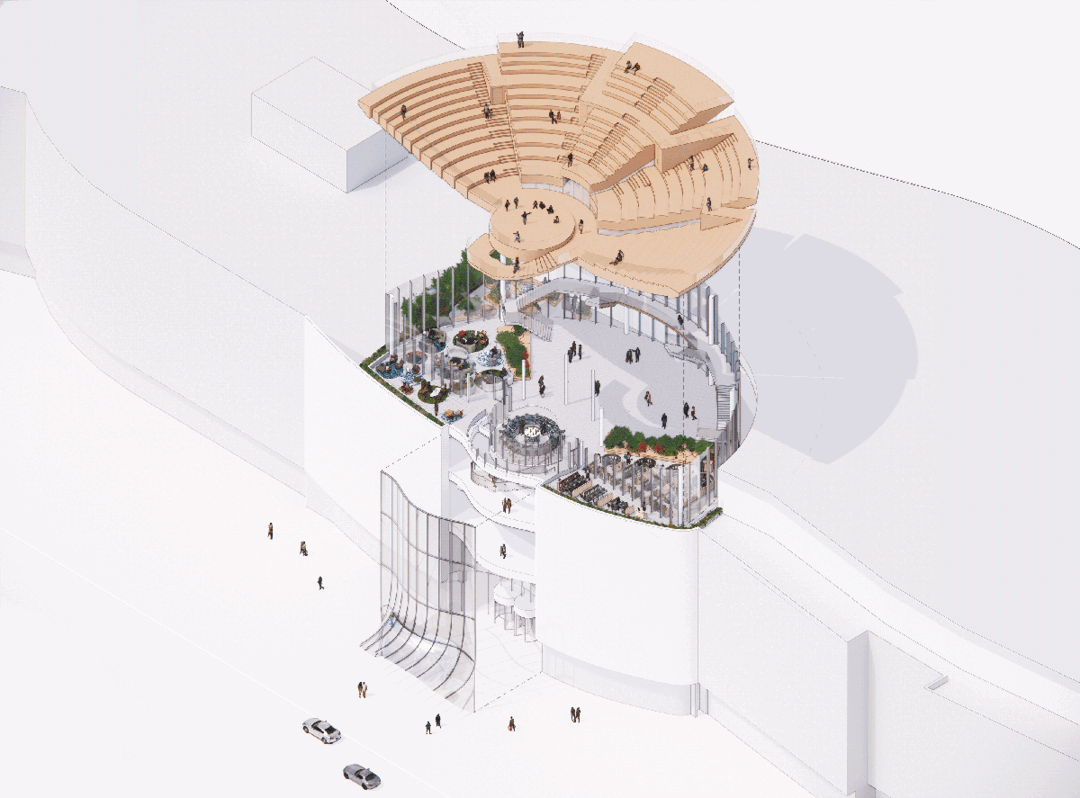
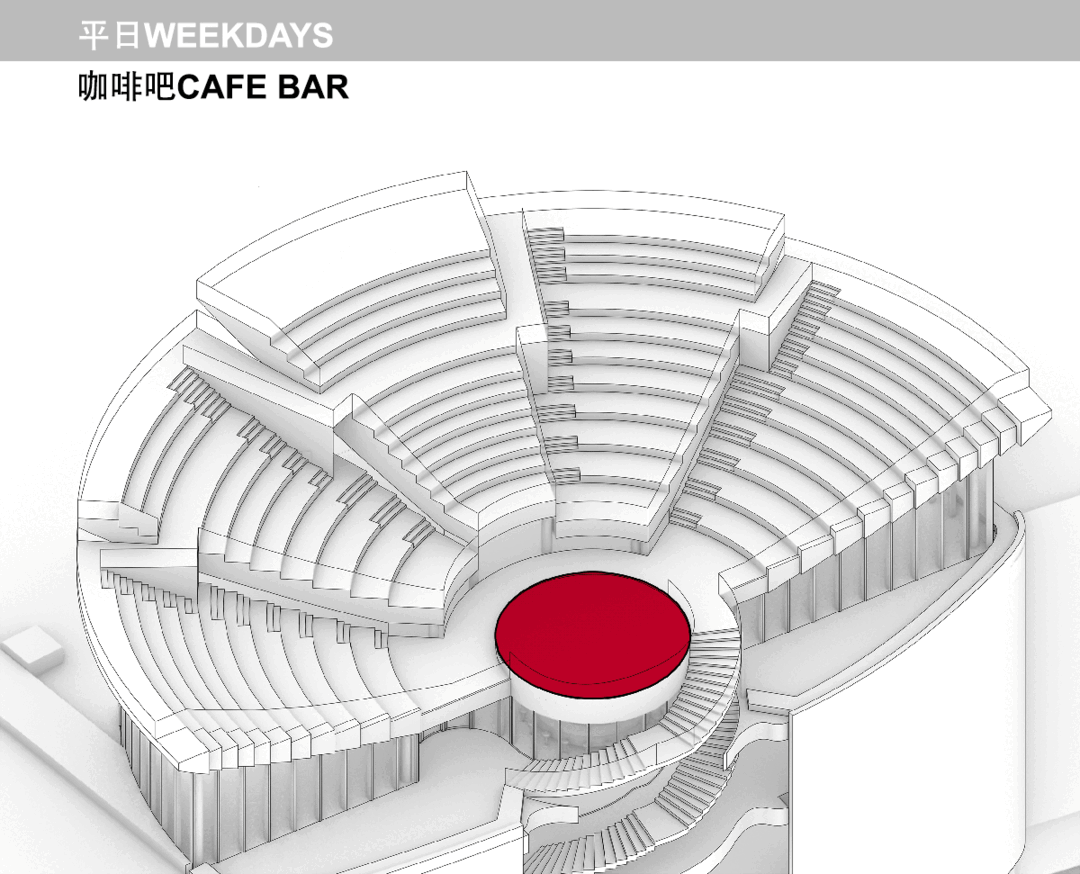







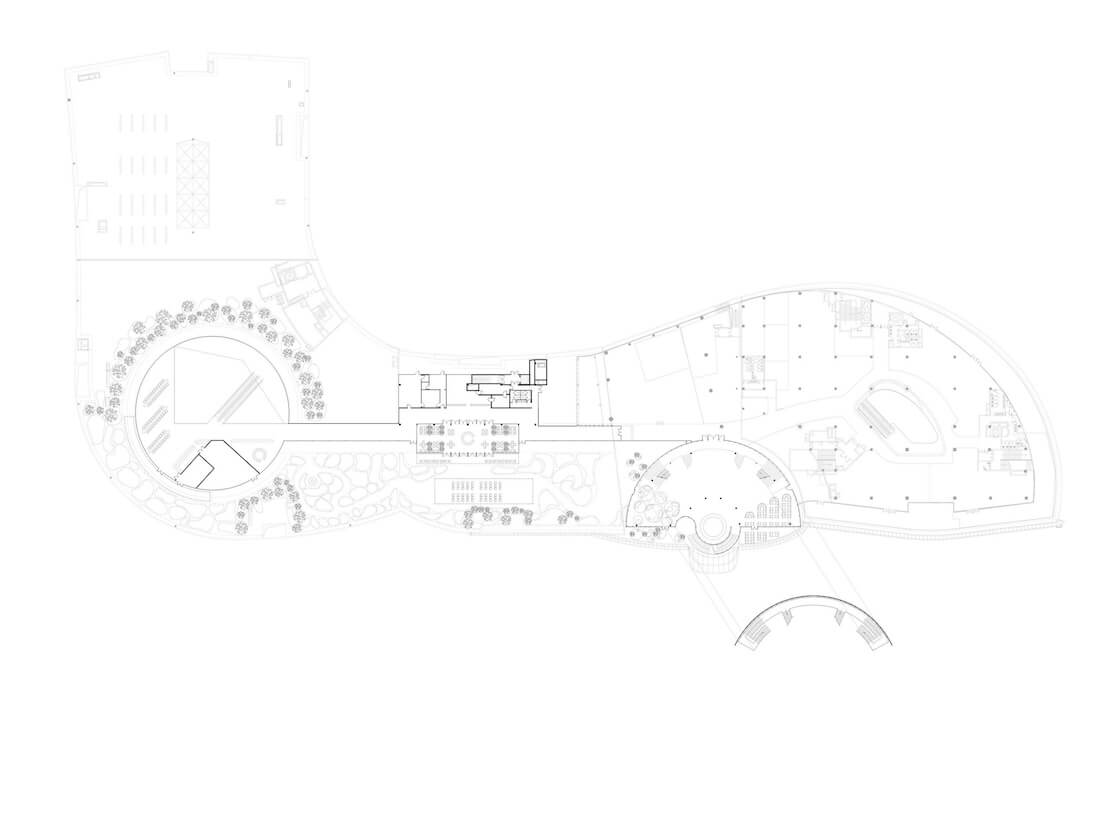
About
Society Particular (SOPA)
Sharp, blunt, to the point.
Society Particular (SOPA) is a lean, internationally-operating design firm specialising in architecture, urbanism, flotation and industrial, founded in 2013 by Yong Cui. SOPA suggests a delicate balance between society and the particular. SOPA is committed to exploring architecture as a medium with which both to think about society and particular.
With a multi-disciplinary approach to complex social issues, SOPA has gained extensive experience in urban regeneration, waterfront developments, tech office, museum, retail, hotel, residential and experimental buildings. SOPA develops concepts and visions that address sustainability, synergism and hybridism.

